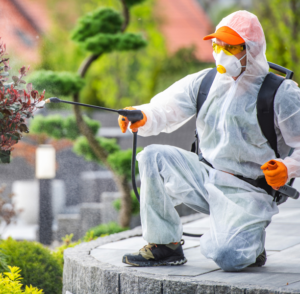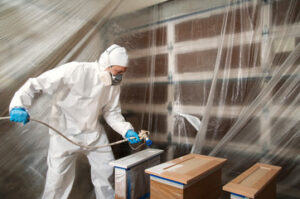Window Installation is an important project for homeowners who want to make their home more energy efficient or address issues with the existing windows. It is important to understand the process and work with a professional company to ensure that your new windows are properly installed.

Cover furniture and move items away from the windows before the project begins. The installer will lay down drop cloths to protect surfaces and wear eye protection and cut-resistant gloves.
The frame of a window is the structure that holds the glass and supports the sash. It is a vital part of a window, so it’s important to choose the right frame material for your climate and style. There are many different frame materials on the market, and each has its own unique benefits.
For example, wood frames offer a timeless look and great insulation, while aluminum and fiberglass are budget-friendly options that won’t warp or discolor. You can also choose from a variety of finishes, including stain and paint.
Window frames are also available in a wide range of thicknesses, which can make a difference in energy efficiency. Thicker frames are generally more energy efficient, as they provide better resistance to temperature changes. However, they may be more difficult to install, and you’ll need to carefully consider how your home’s architecture will accommodate the new frame.
Before starting on any installation work, it’s important to prep the window opening. Begin by removing any exterior casings or blind stops on the top and sides of the frame, then scraping off loose and blistered paint. Then, sand down the jambs and sill, and prime and paint them. Lastly, apply waterproof caulking around the sill to prevent water infiltration and mold.
You should also remove the sash from the old frame, and use a chisel to chisel out any sash weight pockets or metal channels in the jambs to make room for the new window. Once the opening is prepped, you can start assembling the new frame. To ensure it’s a good fit, be sure to double-check your measurements before installing. Inaccurate measurements can lead to improper installation and reduced energy efficiency.
When it comes to window installation, there are a few common mistakes that can be avoided by understanding how the frame is assembled and what type of maintenance each requires. This will help you avoid the most common installation mistakes, such as installing the window the wrong way or leaving out essential insulation. Some of these mistakes can be expensive to correct, so it’s crucial that you or your installer take the time to thoroughly check and double-check all measurements before beginning the project.
Glass
Depending on the design, glass can be tinted, textured or molded to take on unique styles. In addition to aesthetics, glass is durable and energy efficient, reducing heating and cooling costs. It can also help to reduce noise levels in a home, making it an excellent choice for urban living or office spaces.
Choosing the correct glass is important because it will affect the performance of your windows. Some common types of glass are tempered, laminated, low-E, and clear. Each has its own benefits and drawbacks. For example, tempered glass is stronger than laminated and offers more protection against forced entry. Laminated glass is more energy efficient and blocks harmful UV rays. However, it is more brittle than tempered glass and may crack during installation.
Once you’ve chosen the type of glass, it is important to properly install it. This will prevent water and air leaks and improve your comfort. A good installation will also help you to save on energy costs and protect your investment. It’s important to choose a professional installer who follows the manufacturer’s instructions and is licensed and insured.
The first step is to line the steel window frame with glazing putty. This will ensure that the glass is firmly bedded. Make sure to use only window glazing compound that is safe for steel frames. Use a putty knife to flatten the putty and make sure there is a minimum of a 1/8-inch gap between the face of the glass and the steel frame.
Next, insert the new glass into the steel window frame. Be sure to push down firmly and tilt upwards. The spring clips should then be secured in place using the same method used for the old sash. Finally, the glazier’s points should be caulked with a window caulking gun.
It is important to check the dimensions of the replacement glass before ordering it, as a small measurement error can result in expensive damage to the steel frame and the glass itself. Once the window is installed, it’s important to test it for air leaking and moisture. If necessary, the glass can be removed and replaced with a new one.
Insulation
Window insulation film adds an additional layer of protection to your windows, significantly reducing energy loss and lowering utility costs. Its function is to block infrared radiation and heat while allowing visible light into the living space. A wide range of films are available, each with its own unique insulating properties.
It is important to prepare the window area before applying the film. The process involves cleaning the surface and ensuring that there are no loose fragments. It also helps to remove any items that are near the window, such as furniture or blinds. If these items are left in place, they could be damaged by the spray foam insulation or become stuck to it.
The process of installing a window insulation kit is relatively easy. You simply need to choose the type of kit that suits your home and budget. Ensure that it is rated for your window size and consider how many windows you need to insulate. You should also check the thickness of the plastic sheeting as this will have an impact on its insulating effectiveness.
Most kits come with double-sided tape that you can use to anchor the insulation to the window frame. You should start at the top corner of the window and carefully unfold the film, making sure not to leave any gaps or folds. Smooth the film gradually to avoid trapping air bubbles, which will reduce its clarity and insulating capability. Once the film is in place, you can use a hair dryer to shrink it and eliminate any wrinkles.
Another insulating method is to apply caulking around the window. This is a simple and inexpensive option that works well to keep cold air out during the winter and hot air out in the summer. Caulking can also be used to fill small cracks in the frame and create an airtight seal, reducing energy consumption and noise levels.
When applying caulk, it is important to remember that it will need to be reapplied regularly. This is because the material will expand and contract with temperature changes, creating gaps in the surrounding area. This is a common problem with older homes that have not been properly maintained.
Caulking
When installed correctly, caulking is the final seal that prevents air and moisture from entering your home. This is especially important for older buildings that may have loose or broken window frames. It is also an energy-saving measure that can help reduce your heating and cooling bills.
Properly sealing your building with caulking will make it a more comfortable place to live and protect your windows and walls from water damage and rot. It’s also an easy way to save hundreds of dollars a year in energy costs.
When you’re installing new windows, you’ll need to caulk around the perimeter of the frame and trim. The area should be clean and dry before applying the caulking. If there is ice around the windows, it should be melted with a hair dryer before you apply the caulking. In addition, you’ll need a putty knife to remove any old caulking that is still intact.
There are many types of caulking available on the market, so it’s important to choose the right one for your project. The most common is acrylic latex, which is ideal for indoor use. It is mold and mildew resistant and can be used around baseboards, crown molding, windows, and doors. You can also use it in bathrooms to prevent leaks and water damage.
Silicone caulking is another popular choice for exterior use. It is durable and waterproof, and it can withstand extreme temperatures. It’s also easy to install and comes in a variety of colors. It’s also great for filling gaps and cracks in concrete surfaces.
Aside from preventing moisture, air, and heat infiltration, caulking will also improve your building’s appearance. It can make the entire structure look more modern and refined. Additionally, it can be used to hide any gaps or imperfections in your walls and ceilings.
While you can save money by installing your own windows, it’s often better to leave it to professionals. They’ll ensure the job is done properly and correctly, resulting in a finished product that looks beautiful and functions well for years to come.


